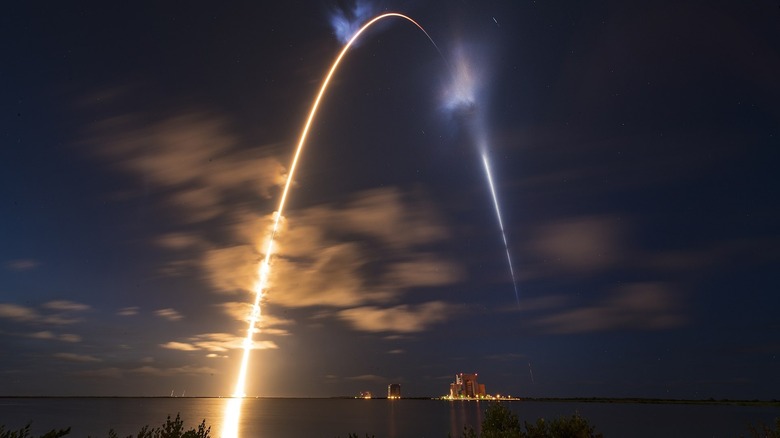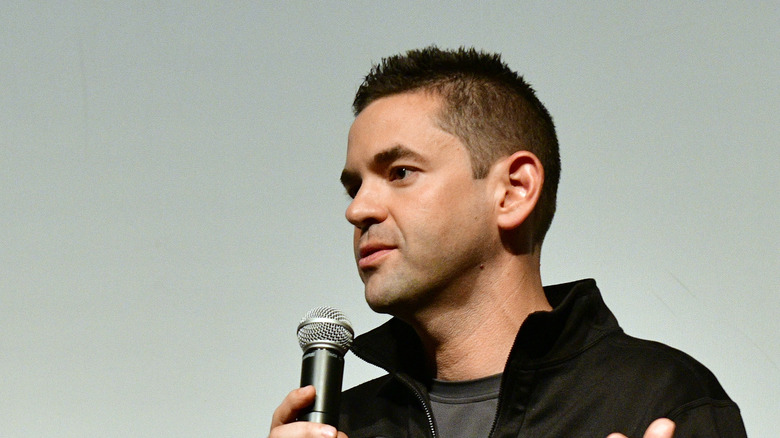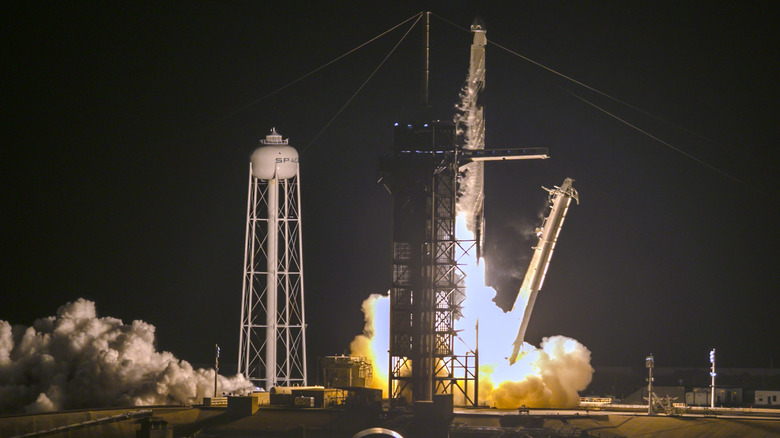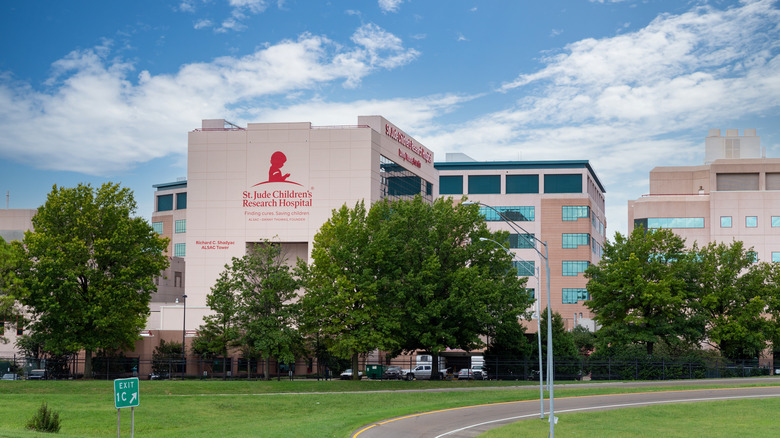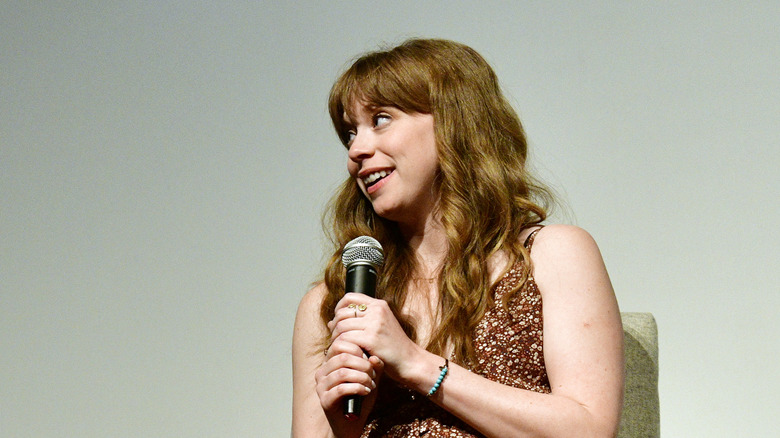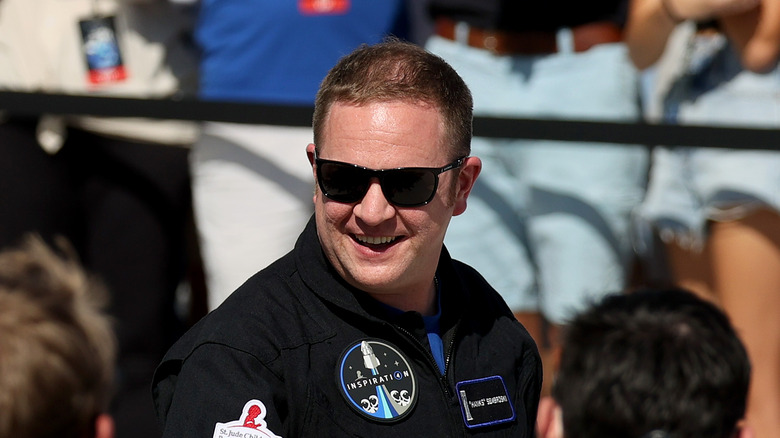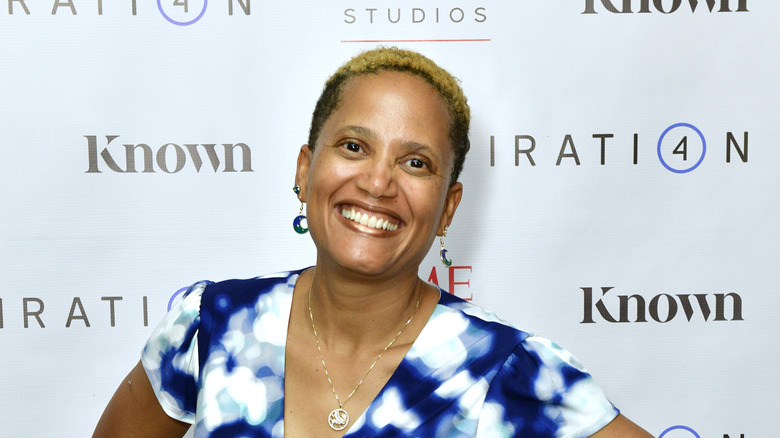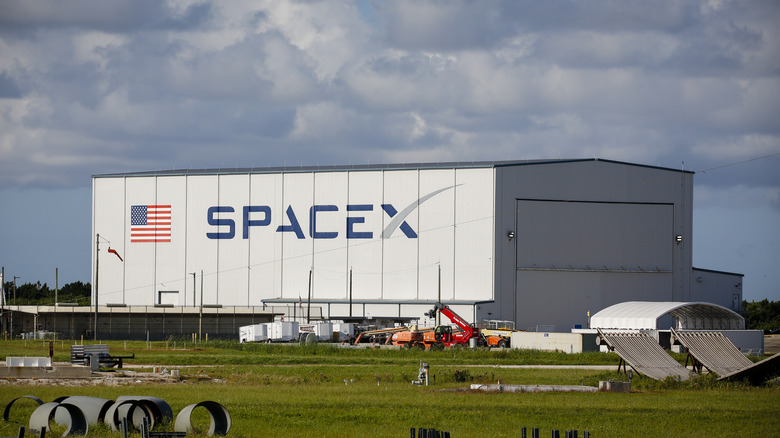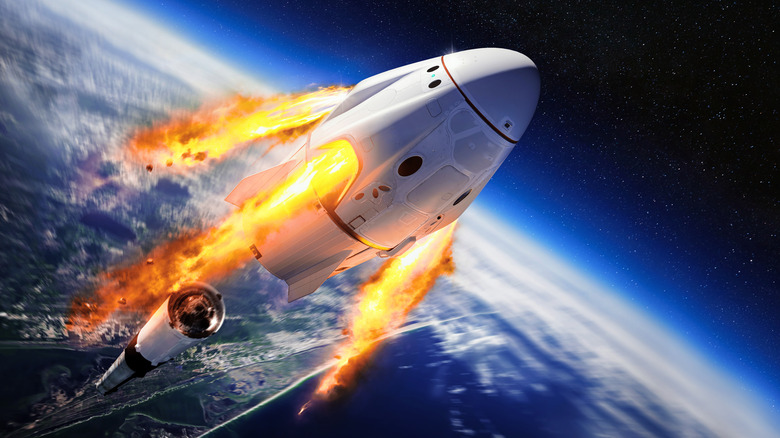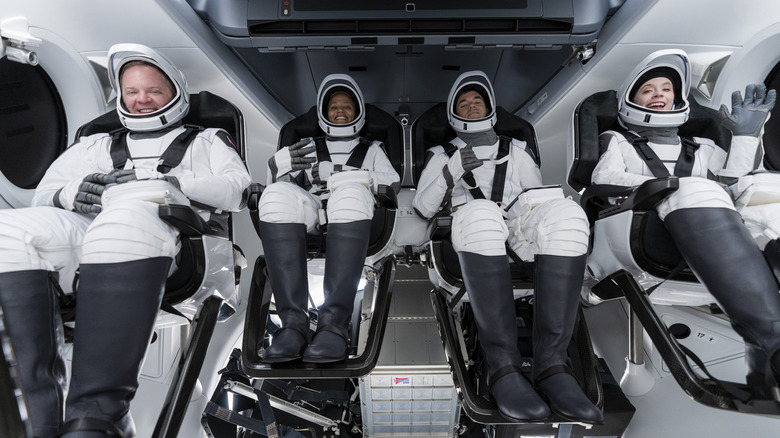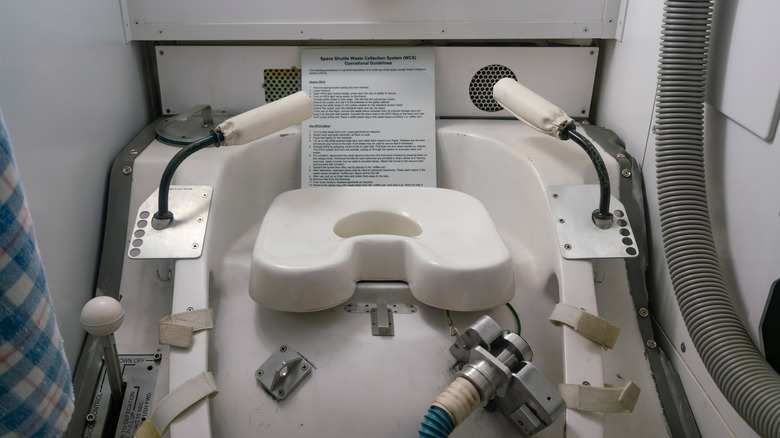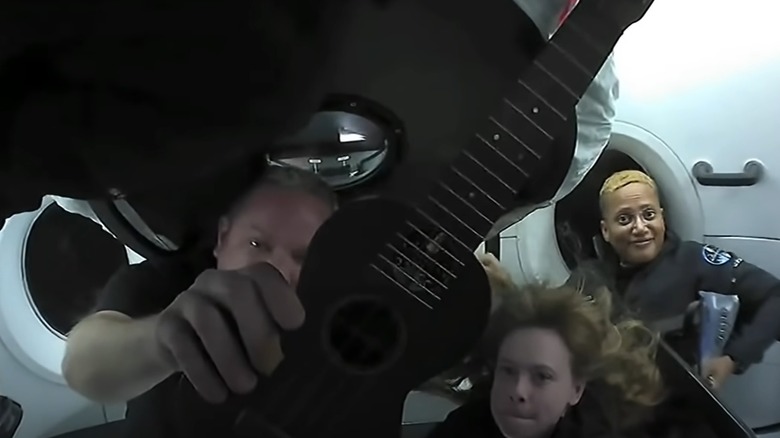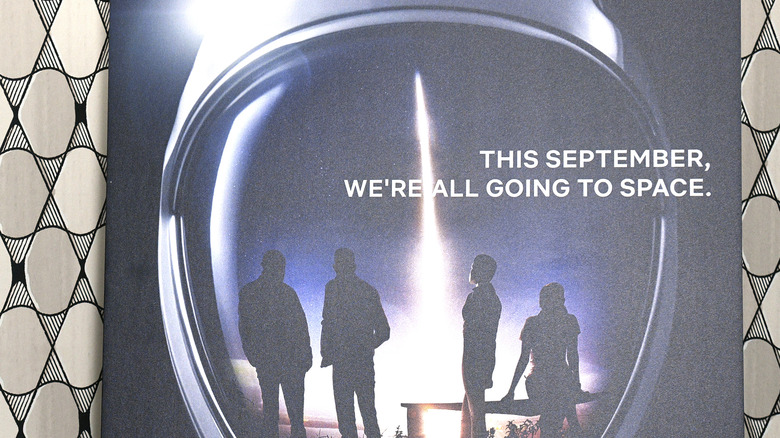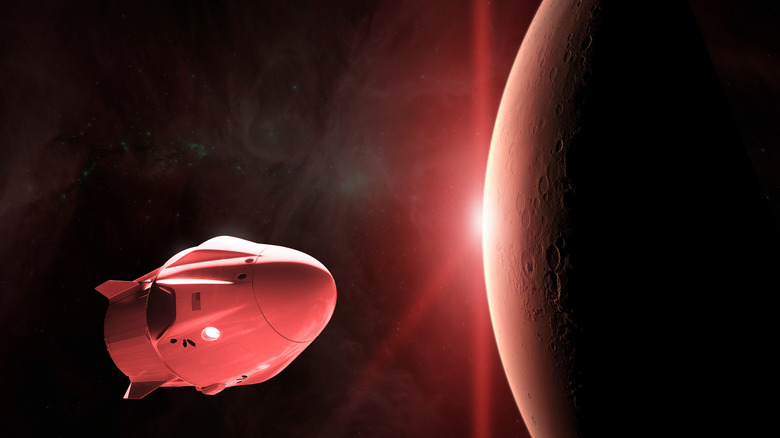The Untold Truth Of Inspiration4, The First All-Civilian Mission To Space
Ever dream of going to space? If you have, you're not alone — a recent ValuePenguin poll of consumers found that about half of all Americans want to go into orbit. And this dream is becoming a distinct reality as the burgeoning space tourism industry got a heavy boost in 2021 thanks to the Inspiration4 mission.
Unlike prior flights, which always had trained, professional astronauts aboard, Inspiration4 was the first time that an entire civilian crew manned the spacecraft (via Space.com). The mission took off in Elon Musk's SpaceX Crew Dragon capsule, Resilience, and launched on September 15; after three days of orbit, it splashed down on September 18. The journey is a milestone for space exploration, but there are certain unspoken truths behind the flight, which, to a cynical eye, may be more about promoting profits than a commitment to humanity. In fact, it may be that the debate about the meaning of this mission is something that will continue for years to come. So let's take a close look at Inspiration4, its crew, and what we can ultimately make of the mission.
The mission was funded by a billionaire
The plain fact is that space travel is expensive. New Scientist reported in 2021 that the cost for a ticket on one of Virgin Galactic's suborbital flights ran about $450,000. This is understandable since it's a new industry with severely expensive overhead costs. That's why for the moment, going to space is a hobby not for the wealthy but the very wealthy. It's also why Inspiration4 would not have been possible without Jared Isaacman.
According to Time, Isaacman is a billionaire who made his fortune as CEO of Shift4 Payments. The company is an online payment firm based in Allentown, Pennsylvania, that he started as a teenager in his family's basement. Isaacman also started Draken International, which is essentially a privately contracted air force service and training company. As reported by Forbes, his net worth is about $1.6 billion, which is why he can be forgiven for not blinking at shelling out the estimated $50 million per seat for the four seats to SpaceX for the Inspiration4 mission. Why would he do this? Forbes quoted Michael Isaacman, Jared's brother, as saying, "He's a big believer that we all have a limited fatigue life, so let's do the most amazing things that we can while we're alive."
Ultimately, Isaacman wound up being Inspiration4's mission commander (he did charter it after all).
The billionaire who funded the mission is actually quite qualified
It may seem that ego alone would drive Jared Isaacman to claim command of the Inspiration4 mission backed by his greenbacks. However, the truth of the matter is that Isaacman is uniquely competent for space, and flight is one of his passions. Space.com reports that Isaacman has clocked about 6,000 hours piloting various aircraft over the years. In fact, according to AIN Online, in 2009, Isaacman flew a Cessna CJ2 in an eastbound circumnavigation of the globe. This took him and co-pilot Doug Demko 61 hours, 51 minutes, and 15 seconds. This set a new record for light business jets, shattering the previous record set in 1991 by some 21 hours.
As the founder of Draken International, Isaacman managed to keep a $100-million stake in the business after he sold it to Blackstone (via Forbes). This gave Isaacman the opportunity to retain 10 planes, which included a MiG jet that he gunned around at supersonic speeds like a teenager given the keys to the family sports car — but on steroids. Along with former Thunderbirds pilot Sean Gustafson, Isaacman also established his own air-show squadron dubbed the "Black Diamond Jet Team." They even made appearances at major football games. It is thus no surprise that this carpe diem, T-personality billionaire would want to give himself new challenges and experiences by going to space. And since he was not in NASA, his best avenue was to go it on his own through SpaceX.
The mission was a fundraiser
While space tourism is clearly a billionaire's game for now, Inspiration4 was different since it was for charity, and St. Jude Children's Research Hospital became the primary beneficiary of the mission. According to St. Jude, the campaign raised over $243 million for the institution, which helped fund a new Inspiration4 Research Center that will help study how to fight children's cancer. The campaign was a major win for St. Jude since their original goal was $200 million (via CNBC). The big donors were Jared Isaacman and his wife Monica, who personally donated $125 million, and SpaceX founder Elon Musk, who chipped in $50 million. ABC News reported Isaacman as saying, "You're not fulfilling your purpose in life if you're not maximizing the various opportunities that come your way. But it would be selfish to do that if you were not also trying to make the world a better place."
In order to emphasize the philanthropic work, Isaacman named the four seats "Leadership," "Hope," "Generosity," and "Prosperity." Isaacman, as mission commander, would represent "Leadership." Two of the seats, "Hope" and "Generosity," were given over to St. Jude. Incidentally, St. Jude is also the beneficiary of the Polaris Program, which is also being led by Isaacman and SpaceX. Its goal is to fly out to the farthest orbit ever and conduct the first commercial spacewalks.
One of the crew members was a childhood cancer survivor
Hayley Arceneaux, from Baton Rouge, Louisiana, represented the "Hope" seat on Inspiration4, which was reserved for a health care worker. According to St. Jude, Arceneaux was afflicted with bone cancer at age 10 and became a patient at St. Jude. After terrible bouts of chemotherapy and bone prosthesis, she successfully recovered. During her stay, she became an ambassador for St. Jude and promoted awareness of childhood cancer. Then, as reported by The Advocate, she returned to St. Jude in 2013 not as a patient but as a physician's assistant, which she called her "dream job."
Her struggles have built a tough character, and her story and connection to St. Jude made her an easy choice when the hospital selected her as the health care worker to join the mission. When the hospital asked Arceneaux if she wanted to go to space, after an initial moment of surprise and suspicion that she was being pranked, she said, "Yes, yes, please!" At 29, Arceneaux was the youngest American ever sent into space as well as the only cancer survivor.
One crew member got on the mission through a raffle
The third seat on the mission, "Generosity," was raffled off as part of the fundraiser for St. Jude's (per The New York Times). The raffle itself garnered an impressive $13 million, and the winner was Chris Sembroski, a data engineer from Everett, Washington, who works for Lockheed Martin (via AP News). Interestingly, Sembroski — who donated $50 to the raffle after seeing a commercial for the fundraiser at the Super Bowl — was not the true winner.
The real winner was Kyle Hippchen, an airline pilot. However, Hippchen was above the weight limit, which would represent a safety issue. Jared Isaacman, however, allowed him to transfer the seat over to Sembroski, who was a roommate of his at Embry-Riddle Aeronautical University. Sembroski was thrilled when he found out what happened in a screening call with the Inspiration4 personnel. Space.com reported that space flight was one of his childhood dreams and while in college, he was even a counselor at Space Camp. Sembroski is also a veteran from the Air Force who maintained intercontinental ballistic missiles.
One crew member was the first African-American woman to pilot a spacecraft
The "Prosperity" seat on Inspiration4 remained in Jared Isaacman's hands. Per the Shift4 Payments blog, this seat was to be given to an entrepreneur who opened an online store using Shift4Shop, and Dr. Sian Proctor was immediately interested. Going to space was a lifelong dream of hers, and according to National Geographic, her father worked on the Apollo program from the orbital tracking station in Guam (Proctor was born there herself). She threw herself into the goal of going to space and became impressively accomplished — she obtained a pilot's license, SCUBA certification, and earned a doctorate in science education at Arizona State University. By the time of the contest, she had become a professor at South Mountain Community College, a member of the Maricopa Community Colleges system.
It was Proctor's passion for space that led to her selection. When asked in an interview with Shift4 Payments what the mission meant to her, she stated, "Solving for space solves for Earth. Think about all of the technology that goes into helping us not only complete a mission like Inspiration4, but to survive in this really hostile environment we call space. All of those things are not only developed here on Earth, but can also come back to benefit us here on Earth."
Proctor, at 51, became the first African-American woman to pilot a spacecraft.
They trained like NASA astronauts
Regular space tourists don't need to go through much physical training. Travel + Leisure points out that this is particularly true of suborbital flights, which are simple up and down arcs. Inspiration4, however, was to be a three-day orbital flight, and it was determined that more extensive training was required.
Business Insider reported that the crew's training was modeled like that of NASA astronauts. This included using centrifuges to generate enough g force to simulate liftoff, parabolic air training to simulate microgravity, and the use of high altitude test chambers. To build his team, Jared Isaacman took them for a hike up Mount Rainier. The idea was to get them to work together and also get used to forms of deprivation to prepare them for space. This was followed up by an intensive study of the Falcon 9 rocket and Crew Dragon spaceship.
Next, the team trained in a Crew Dragon simulator. Dr. Sian Proctor and Isaacman spent the most time in the simulator as pilot and commander, respectively. The capstone to this was a full 30-hour simulation of the flight, which even inserted a disaster in the end where the team had a blundered entry. Isaacman said of the simulation (via Business Insider), "It felt very real. You're living in it for 30 hours. The last 45 minutes, there was awareness from us in the capsule, and them on the ground, that there is a chance that this might not be actually a survivable situation."
Inspiration4 went beyond the Hubble Space Telescope
According to Space.com, Inspiration4 launched successfully on September 15, 2021. The crew members who were seated in the Dragon's capsule (renamed "Resilience") were the first to launch into orbit without a professional astronaut present, and the launch went without a hitch. According to Scientific American, the team climbed to 367 miles above Earth's surface. To put this into some perspective, this is farther than the Hubble Space Telescope, which NASA says orbits at an altitude of 340 miles. It is believed that the distance may provide some further information on the impact of space radiation on humans.
Yet what was really a treat for the four spacefarers was that SpaceX removed the normal docking mechanism on the Dragon's capsule and instead installed a wide glass window known as the "cupola." This provided a better view than even most professional astronauts could get without having to take a space walk. Scientific American reported Hayley Arceneaux as saying during a broadcast down to Earth, "I have to say, the views are out of this world."
Inspiration4 actually did have experiments to conduct
The primary goal of Inspiration4 was to raise awareness and funds for St. Jude (via CNBC). To do this, it garnered attention by launching an entirely civilian team into space that would also bring awareness to space exploration. The four crew members of Inspiration4, however, were not entirely passive observers.
Popular Science reported that the Inspiration4 squad also participated in experiments during their three-day orbit. These were designed by Baylor College of Medicine's Translational Research Institute for Space Health (TRISH). Since there are still unanswered questions about the causality of space sickness, researchers were most interested in is the human body's response to space flight. These experiments needed to be as simple as possible for the crew members, who had little training in such procedures. According to Space.com, the Inspiration4 team was subject to fluid tests, ECG activity, blood oxygen tests, and heart rate monitoring, among many other things.
The mission had toilet troubles
Every mission has its hiccups, and Inspiration4 was no exception. But of all the troubles one could have, why did it have to be the John? Yes, apparently something went wrong with the toilet in the Resilience capsule. The loo, which is located beneath the cupola, affords stunning views of the universe while one is answering nature's call (per Space.com). Fortunately, there is a small privacy curtain. So what went wrong?
While details are sketchy, Space.com reported that Benji Reed, who heads SpaceX's human spaceflight program, later stated at a press conference, "We had a couple of issues that we worked, we did work something on the Waste Management System, but that was worked [out] fine and, you know, the crew was happy and healthy." Space toilets — or waste management systems, if you prefer the euphemism — work through suction since you can't have human waste floating around in zero gravity. Business Insider later reported that the fan that operated the suction went haywire, setting off an alarm. The crew was coached by the ground on how to fix it, and fortunately, the group did so before anything undesirable got loose inside the cabin.
The crew had a ukulele of all things
The team didn't have a terrible amount of things to do, so to pass the time, they kept themselves entertained beyond the view. For example, Space.com reported that Dr. Sian Proctor wrote poetry and did art. Meanwhile, Chris Sembroski brought a $2,000 ukulele. According to Reuters, he used it to good effect while the crew live-streamed a 10-minute video for the home audience. The crew members definitely showed that they were having fun, and while the video view from the cupola wasn't ideal since the ship had flown into the Earth's shadow, the space travelers were very effective, schmoozy space ambassadors.
The team chatted with people from home — including friends and family — and Tom Cruise and Elon Musk both put in calls. For Cruise, the call may have been business-related since the "Top Gun" actor had explored the possibility of actually shooting a movie in space (per The New York Times). As for Musk, despite being the founder of SpaceX, he had little direct contact with the Inspiration4 crew (per Inverse). This even included Isaacman, who only spoke to Musk twice briefly. Isaacman told Inverse, "I try not to talk to him too much about the mission or really talk to him at all, for that matter, because he's a big brain, very cerebral guy. He's constantly thinking about how to solve the world's problems, and I don't want to interrupt that thought process."
Inspiration4 was filled with commercials
Because Inspiration4 was a private venture and essentially commercial (albeit for charity), it was much more commercialized than the typical NASA mission. Vox reported that there was a good deal of branding occurring on Inspiration4 — there was lots of promotion of St. Jude, which objectively is a worthy cause, and Netflix made a series on the mission called "Countdown: Inspiration4 Mission to Space."
Elsewhere, a good deal of collectibles from the mission have made their way into the marketplace (with proceeds going to St. Judes). For example, there are space watches and stuffed rockets, and beer maker Sam Adams even entered the fray by giving the team 66 pounds of hops to carry into space. After the mission splashed down safely off of Florida on September 18, 2021, Sam Adams got those hops back to create its newest brand of IPA, Space Craft. According to Boston.com, a four-pack will run you $22.33. As to what happens to hops when they go into space and how that translates to a better beer, the details are sketchy.
Was Inspiration4 really worth it?
In some respects, the Inspiration4 mission made good theater — it was for a worthy charity and selected people with inspiring stories. However, it also is very much a business, which opens it to criticism. As CBC reports, some critics view the Inspiration4 mission as an extension of ultra-rich joyrides. The industry's emissions further pollute the environment, and critics believe that the missions are wasting money when there are so many problems to solve back on Earth. The CBC quoted Ryan Katz-Rosene, an associate professor at the University of Ottawa's School of Political Studies, as saying that these private ventures into space are "completely tone-deaf to the realities of the sustainability challenges" back on Earth.
However, the counter-argument is that costs will eventually be reduced, and as space travel becomes more ubiquitous, people will begin to realize just how fragile our planet is. Perhaps Elon Musk has it right with his urgent desire to colonize other planets before we drive ourselves extinct.
